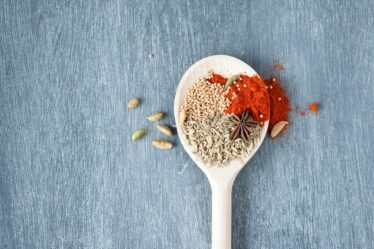
Guajillo peppers are a popular chili pepper variety that originated in Mexico. They are named after the town of Guajillo in the state of Zacatecas, where they were first cultivated. These peppers have a long history in Mexican cuisine and are known for their unique flavor and moderate spiciness.
Guajillo peppers are medium-sized, ranging from 2 to 4 inches in length. They have a deep red color and a smooth, shiny skin. The flavor profile of Guajillo peppers is often described as fruity and slightly sweet, with a hint of tanginess. They have a mild to moderate level of spiciness, making them versatile for use in a variety of dishes.
Key Takeaways
- Guajillo peppers are a popular chili pepper variety in Mexican cuisine.
- The spiciness of Guajillo peppers comes from capsaicin, a compound found in the seeds and membranes.
- Guajillo peppers have a moderate heat level, ranging from 2,500 to 5,000 Scoville units.
- Factors that affect the heat level of Guajillo peppers include growing conditions, ripeness, and processing methods.
- Guajillo peppers can be prepared by toasting, soaking, and blending to control the heat level in recipes.
What Makes Guajillo Peppers Spicy?
The spiciness of Guajillo peppers, like other chili peppers, is due to the presence of chemical compounds called capsaicinoids. Capsaicin is the most well-known capsaicinoid and is responsible for the burning sensation experienced when consuming spicy foods.
When capsaicin comes into contact with the tongue or other mucous membranes, it binds to pain receptors, triggering a response that is interpreted by the brain as heat or pain. This is why consuming spicy foods can cause sweating, increased heart rate, and even release endorphins.
Scoville Scale: Measuring the Heat of Guajillo Peppers
The Scoville scale is a measurement system used to quantify the heat level of chili peppers. It was developed by pharmacist Wilbur Scoville in 1912 and is based on the amount of capsaicin present in a pepper.
On the Scoville scale, Guajillo peppers typically range from 2,500 to 5,000 Scoville Heat Units (SHU). This places them in the mild to moderate range of spiciness. To put this into perspective, jalapeno peppers typically range from 2,500 to 8,000 SHU, while habanero peppers can reach up to 350,000 SHU.
Factors Affecting the Heat Level of Guajillo Peppers
| Factors | Impact on Heat Level |
|---|---|
| Scoville Units of Seed | High Scoville Units = High Heat Level |
| Amount of Capsaicin | High Capsaicin = High Heat Level |
| Ripeness of Pepper | Redder Peppers = Higher Heat Level |
| Method of Preparation | Dried Peppers = Higher Heat Level |
| Geographic Location | Hotter Climates = Higher Heat Level |
Several factors can influence the heat level of Guajillo peppers. These include growing conditions, maturity level, and processing methods.
Growing conditions such as soil type, climate, and amount of sunlight can affect the spiciness of peppers. Generally, peppers grown in hotter climates tend to be spicier. Additionally, peppers that are allowed to fully ripen on the plant before harvesting are usually hotter than those picked prematurely.
Processing methods can also impact the heat level of Guajillo peppers. Drying and grinding the peppers into a powder can concentrate the capsaicin content, making them spicier. On the other hand, removing the seeds and membranes can reduce the heat level.
Comparing Guajillo Peppers to Other Varieties of Chili Peppers
When comparing Guajillo peppers to other varieties of chili peppers, it is important to consider both their Scoville rating and flavor profile.
In terms of Scoville rating, Guajillo peppers fall in the mild to moderate range. They are milder than jalapeno peppers but spicier than poblano peppers. Habanero peppers, on the other hand, are significantly hotter than Guajillo peppers.
In terms of flavor profile, Guajillo peppers have a unique fruity and slightly sweet taste with a hint of tanginess. This sets them apart from other chili pepper varieties that may have a more earthy or smoky flavor.
How to Prepare Guajillo Peppers to Control the Heat Level

If you want to control the heat level of Guajillo peppers in your dishes, there are a few preparation methods you can use.
One method is to remove the seeds and membranes of the peppers before using them. The seeds and membranes contain a higher concentration of capsaicin, so removing them can reduce the spiciness. To do this, simply cut off the stem end of the pepper, then slice it open lengthwise. Use a spoon or your fingers to scrape out the seeds and membranes.
Another method is to soak the Guajillo peppers in water or broth before using them in your recipe. This can help to mellow out the spiciness and soften the peppers. Simply place the peppers in a bowl and cover them with water or broth. Let them soak for about 20 minutes, then drain and use as desired.
Cooking with Guajillo Peppers: Tips for Balancing the Heat
When cooking with Guajillo peppers, it is important to balance the heat level to suit your taste preferences. Here are a few tips to help you achieve this:
1. Pairing with other ingredients: Guajillo peppers can be paired with ingredients that help to balance out their spiciness. For example, the sweetness of tomatoes or onions can help to counteract the heat. Creamy ingredients like sour cream or coconut milk can also help to mellow out the spiciness.
2. Adjusting the amount of peppers used: If you find that a recipe calls for too many Guajillo peppers and you want to reduce the heat, you can simply use fewer peppers or adjust the ratio of peppers to other ingredients. Start with a smaller amount and add more if desired.
3. Tasting as you go: When cooking with Guajillo peppers, it is always a good idea to taste your dish as you go along. This will allow you to adjust the seasoning and spiciness level as needed.
Health Benefits of Guajillo Peppers and Spiciness
In addition to adding flavor and heat to dishes, Guajillo peppers also offer several health benefits. The spiciness of these peppers can have positive effects on the body.
1. Anti-inflammatory properties: Capsaicin, the compound responsible for the spiciness of Guajillo peppers, has been found to have anti-inflammatory properties. It can help to reduce inflammation in the body, which is linked to various chronic diseases.
2. Boosting metabolism: Consuming spicy foods like Guajillo peppers can temporarily increase your metabolism. This can help with weight management and may even aid in weight loss.
3. Pain relief: Capsaicin has been used for centuries as a natural pain reliever. It can help to alleviate pain from conditions such as arthritis, muscle soreness, and nerve damage.
Guajillo Peppers in Mexican Cuisine: Spicy Delights
Guajillo peppers are a staple ingredient in Mexican cuisine and are used in a variety of traditional dishes. Here are a few examples:
1. Mole sauce: Guajillo peppers are one of the key ingredients in mole sauce, a rich and complex sauce that is often served with chicken or pork. The peppers add depth of flavor and a mild spiciness to the sauce.
2. Salsa roja: Guajillo peppers are often used to make salsa roja, a classic red salsa that is commonly served with tacos, enchiladas, and other Mexican dishes. The peppers give the salsa a vibrant color and a moderate level of spiciness.
3. Pozole: Guajillo peppers are used to make the flavorful broth for pozole, a traditional Mexican soup made with hominy and meat (usually pork). The peppers add a subtle heat and depth of flavor to the soup.
In addition to these traditional dishes, Guajillo peppers can also be used in modern recipes such as marinades, rubs, and sauces for grilled meats, vegetables, and seafood.
Enjoying the Heat of Guajillo Peppers Responsibly
Guajillo peppers are a versatile chili pepper variety that adds flavor and heat to a variety of dishes. While they have a moderate level of spiciness, it is important to enjoy them responsibly and in moderation.
If you are new to spicy foods, start by using a small amount of Guajillo peppers in your recipes and gradually increase the amount as you become more accustomed to the heat. Remember to taste your dishes as you go along and adjust the spiciness level to suit your taste preferences.
Overall, Guajillo peppers offer a unique flavor profile and a moderate level of spiciness that can enhance the taste of your favorite dishes. Whether you are cooking traditional Mexican recipes or experimenting with new flavors, Guajillo peppers are sure to add a delicious kick to your meals.
If you’re a fan of guajillo peppers and their spicy kick, you might also be interested in exploring the world of mocktails. Flavorful Sips has a fantastic article on creating exquisite mocktails that will satisfy your taste buds without the alcohol. Check out their guide here to discover a variety of refreshing and flavorful non-alcoholic beverages.



